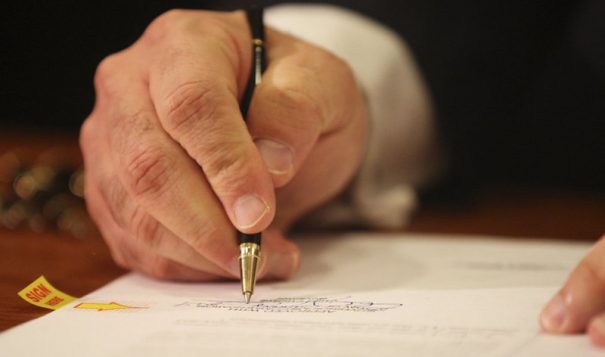
After 400 years of struggling to stay relevant, Virginia’s First Nations are now celebrating.
By A. Kay Oxendine

On January 29, 2018, around 7:30 PM, President Donald Trump put pen to paper to sign H.R.984 – Thomasina E. Jordan Indian Tribes of Virginia Federal Recognition Act of 2017. The tribes included in this bill are the Upper Mattaponi, Rappahannock, Chickahominy, Eastern Chickahominy, Monacan and Nansemond.
“This is a very long time coming,” said Chief Frank Adams of the Upper Mattaponi tribe. “Many of our people fought for years and years just to get a seat at the table. We are now looking forward to offering a better future for our upcoming generations. This will help guarantee that our culture will not only survive, but thrive.”

Wayne Adkins, first Assistant Chief from the Chickahominy tribe, agreed. “I never lost faith.
Many of us just kept moving forward until this goal was realized. We are thrilled with the outcome.”

Before Wayne was Assistant Chief, his father, Arthur Leonard Adkins, was Chief of the tribe from 1986 to 2001. Chief Adkins’ lasting legacy was as a lifetime educator and teacher at Samaria School. He also attended Bacone College, along with many other Virginia Natives. When he was a young man, it was illegal in Virginia for an American Indian to obtain an education past the 7th grade, so many Virginia tribespeople traveled to Oklahoma to obtain their education. When he came back to Virginia, he spent his life as an educator, always willing to share information about his tribe, of which he was very proud.
Monacan Indian Tribal Member Vicky Ferguson, who works at the Monacan Indian living history exhibit at Natural Bridge as a guide, gave the following statement:  “When the post was shared about out tribe finally getting Federal Recognition, it was an emotional moment. I thought about my Dad and his teachings. I thought about all the ancestors who were denied their legal heritage. No, my DNA did not change with the signing of a document but, finally, the records will be righted, and we are still here to tell our stories.”
“When the post was shared about out tribe finally getting Federal Recognition, it was an emotional moment. I thought about my Dad and his teachings. I thought about all the ancestors who were denied their legal heritage. No, my DNA did not change with the signing of a document but, finally, the records will be righted, and we are still here to tell our stories.”
Using Chickahominy’s language as an example, with the signing of this bill, each tribe has the following verbiage to abide by:
- Sec. 103 – This bill extends federal recognition to the Chickahominy Tribe. The tribe and its members are made eligible for the services and benefits provided by the federal government to federally recognized Indian tribes, without regard to the existence of a reservation for the tribe. The bill establishes the service area of the tribe.
- Sec. 104 – The bill sets forth requirements for the tribe regarding its membership roll, governing documents and governing body.
- Sec. 106 – The Department of the Interior, upon the request of the tribe, must take certain land owned by the tribe in Virginia into trust for the benefit of the tribe, to be considered part of the tribe’s reservation.
- Sec. 107 – The bill does not affect the hunting, fishing, trapping, gathering or water rights of the tribe or its members.
Another request that is not in the bill but will be realized, is to repatriate the remains of their ancestors stored at the Smithsonian. The bill also prohibits the tribe from conducting gaming activities.
The bill was named after long-time friend to the Virginia Indian community and Indian Activist, Thomasina Jordan. Thomasina was the first Indian to serve in the United States Electoral College in 1988, and was named to the Virginia Council on Indians by Governors George Allen and Jim Gilmore.

While living in Alexandria, Thomasina faithfully attended and supported all of Virginia tribe’s pow-wows and events, until her death in the late 1990s.
Rep. Rob Wittman (R-Va.), former Sen. Tim Kaine (D-Virginia), along with Sen. Mark Warner (D-Virginia) were instrumental in designing and sponsoring this historic bill.
With the six tribes being granted federal recognition, there are now 573 Federally Recognized Tribes in the United States.
